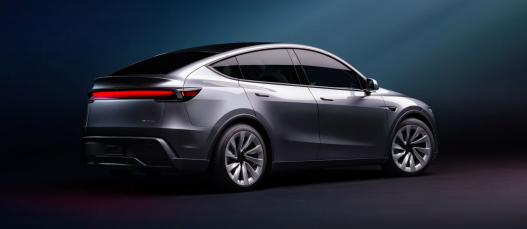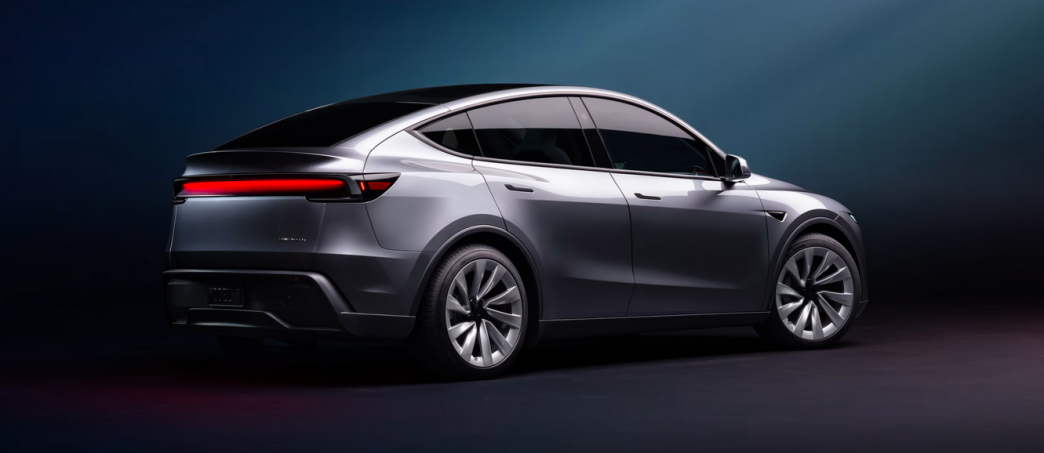The 2026 Tesla Model Y, codenamed “Juniper,” represents a significant refresh of Tesla’s best-selling electric SUV, building on its global success with meaningful updates to design, comfort, and efficiency. As the world’s top-selling vehicle in 2023 and 2024, the Model Y faces increasing competition from rivals like the Hyundai Ioniq 5, Ford Mustang Mach-E, and Kia EV6. This review dives into the pros, cons, and key changes based on expert insights and early owner feedback, assessing whether the Juniper update keeps the Model Y ahead of the pack.
Exterior Design: Sleeker but Polarizing
The 2026 Model Y sports a redesigned exterior that aligns with Tesla’s futuristic aesthetic. The front features a full-width LED light bar, reminiscent of the Cybertruck, paired with split headlights for a sharper, more angular look. At the rear, a hidden LED strip reflects off a silver panel, creating a unique light bar effect without a traditional strip. New paint colors, wheel designs (19-inch standard, 20-inch optional), and improved aerodynamics contribute to a slight efficiency boost, unlocking up to 357 miles of EPA-estimated range in the Long Range RWD trim.
Pros: The styling is bolder and more distinctive, setting it apart from the Model 3 and older Model Y. Aerodynamic tweaks enhance range, and the lack of a front badge gives a clean, minimalist vibe.
Cons: The Cybertruck-inspired front light bar and angular design divide opinions—some find it sleek, others generic or less distinctly “Tesla.” The absence of a front badge may confuse non-enthusiasts.
Interior: Refined Comfort with Tesla Quirks
Inside, the Juniper update brings a more premium cabin, addressing past criticisms of build quality and material cheapness. Key upgrades include:
- Seating: Reshaped, ventilated front seats and heated rear seats are more comfortable, with vegan suede accents in the Launch Series trim. Owners praise the “thud” of the doors, signaling improved build quality.
- Tech: The 15.4-inch central touchscreen remains the control hub, now with faster Wi-Fi and a more responsive interface. An 8-inch rear-seat touchscreen adds climate controls, gaming, and streaming apps like Netflix, a boon for families.
- Ambiance: Wraparound ambient lighting, a redesigned dashboard, and acoustic glass reduce cabin noise, making the interior quieter and more refined. However, some reviewers note the lighting isn’t as vibrant as competitors’.
- Storage: The boot offers 2,138 liters of total load capacity (including the frunk), though electrically folding rear seats reduce space by 20 liters compared to the previous model.
Pros: The interior feels fancier, with better materials, quieter acoustics, and family-friendly tech. The retention of a traditional turn-signal stalk (unlike the Model 3’s buttons) is a win for usability.
Cons: The digital gear selector on the touchscreen is divisive, with concerns about reliability given past Tesla screen issues. The lack of physical buttons, Apple CarPlay, and a 360-degree camera view frustrates some, and the minimalist design still feels sparse compared to rivals.
Performance and Handling: Smoother and Punchier
The 2026 Model Y retains its core powertrain but benefits from retuned suspension and engineering tweaks:
- Powertrains:
- Long Range RWD: 295 hp, 310 lb-ft, 0-60 mph in ~6.5 seconds, 357-mile range.
- Long Range AWD: 384 hp, 375 lb-ft, 0-60 mph in ~4.4 seconds, 337-mile range.
- Launch Series AWD: 384 hp, 0-60 mph in 4.1 seconds with Acceleration Boost, 320-mile range.
- Performance (TBD): Expected ~3.5 seconds 0-60 mph, 277-mile range.
- Ride Quality: The updated suspension is a standout, transforming the previously stiff and jarring ride into a smoother, more forgiving experience. Owners and reviewers describe it as “legendary” and “Model X-level,” soaking up bumps without the rattling of older models.
- Efficiency: A 75-kWh battery (unchanged) supports up to 250 kW fast charging, adding 151 miles in 15 minutes. Aerodynamic gains and a new die-cast rear floor enhance range and structural rigidity.
Pros: The suspension overhaul makes the Model Y more comfortable and engaging, while acceleration remains thrilling, especially in the Launch Series. Access to Tesla’s Supercharger network is a major advantage for long-distance travel.
Cons: Some note increased motor noise under hard acceleration. The ride, while improved, isn’t as plush as luxury competitors like the Cadillac Lyriq.
Safety and Tech: Advanced but Opinionated
The Model Y Juniper maintains Tesla’s strong safety credentials, earning a 5.0 IIHS rating with “Good” scores for side impact and frontal crashes. It includes eight airbags, a 360-degree view camera (though lacking a top-down view), lane departure warning, and a standard anti-collision system. The Launch Series comes with Full Self-Driving (Supervised), which some reviewers find improved but still more gimmicky than practical.
Pros: Top-tier safety scores and a robust suite of driver aids. The front camera view is a welcome addition, and over-the-air updates keep the car evolving.
Cons: The blind-spot indicator (a single-pixel light) feels cheap, and FSD’s $12,000 price tag (or subscription) is hard to justify for many. The lack of Android Auto and a head-up display lags behind competitors.
Pricing and Value
Pricing for the 2026 Model Y remains competitive, especially with the $7,500 federal tax credit:
- Long Range RWD: ~$44,990 ($37,490 after credit).
- Long Range AWD: ~$49,000.
- Launch Series AWD: $61,630.
- Performance (est.): ~$57,000.
Pros: The base price matches the outgoing model, and the tax credit enhances affordability. The Long Range RWD’s 357-mile range is class-leading for the price.
Cons: The Launch Series’ $60,000+ price feels steep for a loaded AWD model, especially with premium competitors offering more features. Canadian pricing ($84,990 MSRP) is notably higher.
Ownership Experience
Owners rate the 2026 Model Y highly, with Edmunds reporting a 4/5 average (27 reviews) and Kelley Blue Book noting a 4.1/5 overall and 4.2/5 for reliability. Early adopters praise the lack of fit-and-finish issues, fun driving dynamics, and spacious interior. However, some report minor trim squeaks, and Tesla’s touchscreen-heavy interface remains a love-it-or-hate-it feature.
The Supercharger network continues to be a trump card, offering reliable, cost-effective charging. However, Tesla’s service network and touchscreen reliability concerns linger for some owners.
Verdict
The 2026 Tesla Model Y Juniper is a compelling evolution of an EV icon. Its smoother ride, quieter cabin, and refreshed design address key criticisms, while retaining the range, performance, and Supercharger access that made it a global bestseller. Standout features like the improved suspension, premium interior materials, and rear-seat touchscreen elevate its appeal, particularly for families. However, the polarizing exterior, touchscreen gear selector, and missing features like Apple CarPlay or a 360-degree camera keep it from perfection. Against rivals, it holds a slight edge in range and charging but faces tougher competition than ever.
Score: 8.5/10
Who It’s For: Tech-savvy buyers, EV enthusiasts, and families seeking a practical, high-range SUV with Tesla’s ecosystem.
Who Should Look Elsewhere: Those prioritizing luxury refinement, physical controls, or budget-friendly pricing under $40,000.
If you’re considering the Model Y, test-drive it to see if the Juniper’s updates suit your needs, and compare it to the Hyundai Ioniq 5 or Ford Mustang Mach-E for a well-rounded decision. For more details, check Tesla’s website or reviews from MotorTrend and Edmunds.





















